
Phone: 847-844-0680
Emergency Phone: 847-844-0680
Fax: 847-844-0799
All Products
| Product Information: | Product Image: | Actions: |
HS-350-ACLiquid Phase, 50/50 Organoclay & Activated CarbonHydrosil’s HS-350-AC is a 50/50 blend by volume of organoclay, HS-300, and coconut shell activated carbon, HS-AC. The HS-AC is high quality carbon for liquid phase with extraordinary surface area, fine pore structure, high density, and superior hardness. Hydrosil’s HS-300 offers high removal capacity for anionic compounds while the HS-AC adsorbs a variety of aromatic and aliphatic compounds. The two products blended together casts a wide net to remove a handful of inorganic and organic compounds. This HS-350-AC is effective at removing phosphates, sulfates, cyanides, and other anionic compounds from water. The HS-350-AC is commonly used in stormwater treatment, de-watering systems, and other industrial and remediation systems. | 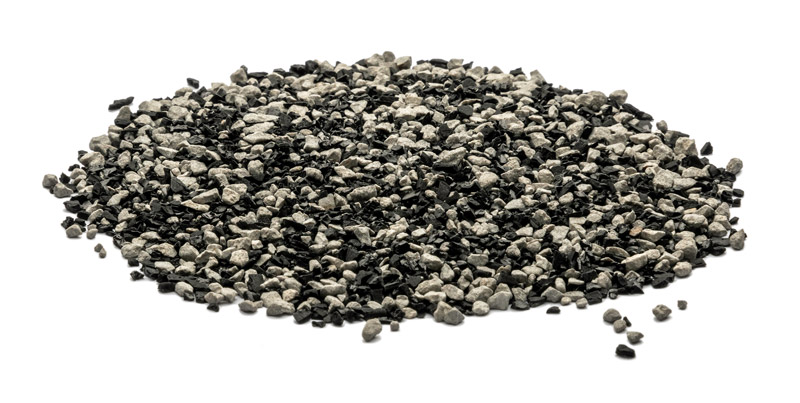 | |
HS-200+Sediment Capping, Stabilization, and PRBHydrosil’s HS-200+ is active capping technology for isolating contaminates (i.e., heavy metals, polyaromatic hydrocarbons (PAH), and polychlorinated biphenyl (PCBs)) from damaging surrounding aquatic environments such as lakes, rivers, groundwater. The HS-200+ is commonly used in sediment caps for isolating oils, greases, organic and inorganic compounds. By altering the chemistry of the zeolite based organoclay, Hydrosil enhances the adsorption characteristics of several organic and heavy metal compounds: benzene, phenol, ethylbenzene, and naphthalene. The HS-200+ is installed for in-situ stabilization and permeable reactive barrier (PRB) treatment in groundwater applications. | 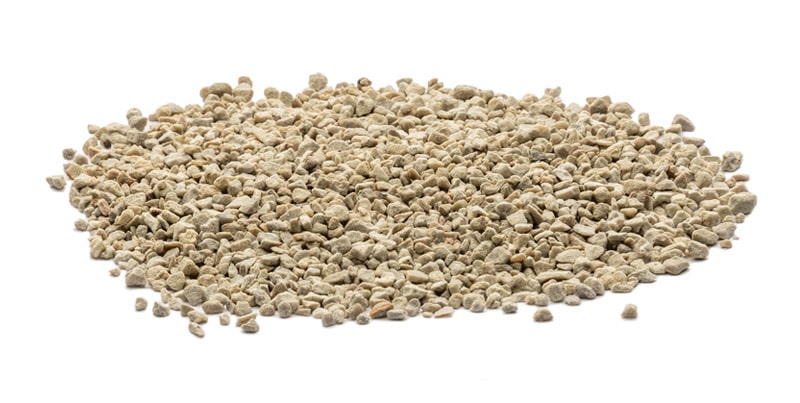 | |
HS-ACCCoal-Based Activated CarbonWhat is HS-ACCHydrosil’s HS-ACC is a highly active granular activated carbon (GAC) manufactured from select grades of coal. Hydrosil’s HS-ACC is designed for liquid phase applications. The coal-based carbon is typically used in portable water purification, wastewater treatment, industrial air purification, chemical purification, and the food and beverage industry. Coal-based activated carbon is known best for its’ combination of micro, meso, and macro pore structure. With a variety of pore structure the material is capable of removing a wide range of molecular weights. HS-ACC is NSF/ANSI/CAN 61 certified for potable water use. Where is HS-ACC UsedHS-ACC is commonly used in oil and gas refineries, municipal drinking water purification, and industrial pollution control. Industrial projects that use HS-ACC include groundwater treatment, stormwater run-off treatment, reverse osmosis systems, and removal of dissolved organics. HS-ACC, coal based activated carbon, is being used in combination with HS-PF for removal of per- and poly-fluorinated alkyl substances (PFAS). Granular activated carbon is one of the most well known technologies for removal of PFAS compounds through adsorption. How Activated Carbon is used in Water Treatment What is Activated CarbonActivated carbon commonly referred to as activated charcoal is a a highly porous material used to remove pollutants from contaminated liquid and gas streams. Activated carbon is derived from a variety of raw materials such as coconut, wood, coal (bituminous, anthracite, sub-bituminous, and lignite), peat, and bamboo. Each raw material has unique properties which effect the resulting pore structure, carbon content, and ash content, which are important characteristics when removing a contaminant of concern. The material is used in remediation, medical, and industrial applications where adsorption is required. Activated carbon has strong physical adsorption properties known as London Dispersion Forces which is a Van der Waals Force. The attraction between the activated carbon and the pollutant are highly dependent on the vapour pressure of the adsorbing molecules. Activated carbon is often altered or impregnated by chemicals to enhance the surface area of the carbon. When the carbon is chemically altered the bonds are much stronger than London Dispersion Forces. Chemicals often impregnated on activated carbon include potassium hydroxide, phosphoric acid, or sulfur. With the addition of chemicals the activated carbon will have an affinity for select compounds such acidic or basic pollutants.
| 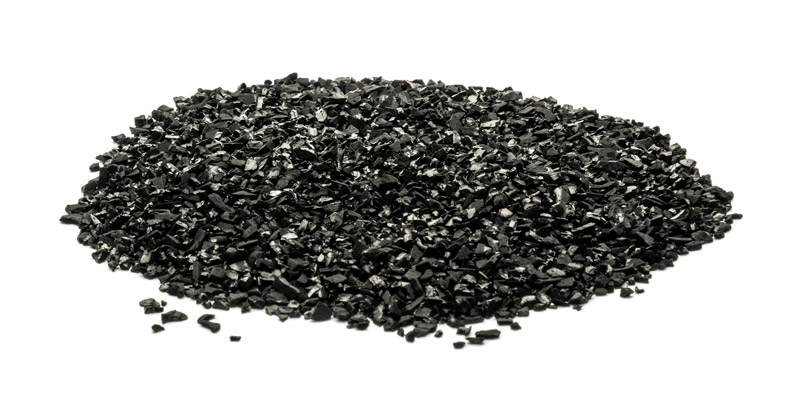 | |
HS-PFLiquid Phase, PFAS/PFOA OrganoclayHydrosil’s HS-PF is designed to remove per- and polyfluoroalkyl substances (PFAS). The media is selective for removing PFAS (PFOA, PFOS, FTCA, FTSA, FTOH). Based on the application, flow, concentration of the pollutants, granular activated carbon (GAC) or resin may be used to remove contaminates to non-detectable limits. Hydrosil’s HS-PF is an economical and efficient remediation process which removes both long and short chain perfluoroalkyl carbolic acids (PFCAs). These emerging pollutants are commonly found in ground water from manufacturing facilities such as chemical, textiles, metal coating, automotive, as well as airports and air force bases. Testing has shown that PFAS can be adsorbed into the inter-layer structure of the material for complete PFAS removal including PFOS and PFOA. What is PFASPer- and poly-fluorinate alkyl substances are both known as “PFAS” or the “Forever Chemicals”. PFAS is grouped into polymers and non-polymers. Both of these are man-made chemicals have been manufactured for centuries in food packaging, stain repellents, textiles, fire-fighting foam, cleaning products, and military training equipment. PFAS chemicals are beginning to be phased out in the United States in order to eliminate the use of PFOA contamination. PFOA and PFOS is still be manufactured internationally and used in consumer products. The unregulated PFAS compound is also known as “GenX” to the large American chemical company that use it in manufacturing process. Due to the unique molecular structure of PFAS—it is extremely difficult to break it down. Several water treatment processes are resistant to removing PFAS; Hydrosil’s HS-PF works to remove PFAS by means of ion exchange. Ion exchange is used to remove both short and long chain PFAS. | 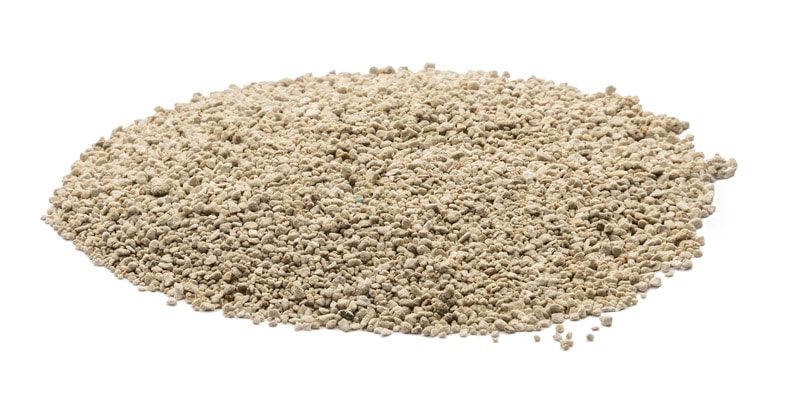 | |
HS-250-ACRLiquid Phase, 50/50 Organoclay & Reactivated CarbonHydrosil’s HS-250-ACR is a 50/50 blend by volume of 8 x 14 mesh organoclay (HS-200) and 8 x 30 mesh reactivated carbon (HS-ACR). The HS-250-ACR, is effective at removing oil, heavy metals, and similar organics from water. What is OrganoclayHydrosil’s pure organoclay also known as “HS-200” is zeolite based material with a high capacity for oil and heavy metals. For more information on Hydrosil’s organoclay—visit HS-200 product page. What is Reactivated CarbonHydrosil’s reactivated carbon also known as “HS-ACR” is high quality carbon with extraordinary surface area, fine pore structure, high density, and superior hardness. For more information on Hydrosil’s reactivated carbon/charcoal—visit HS-ACR product page. |  | |
HS-AC AirActivated CarbonWhat is HS-ACHS-AC is coconut shell activated carbon that is commonly used in industry for removing pollutants in vapor phase. Hydrosil’s HS-AC is highly active granular activated carbon (GAC) manufactured via high temperature steam activation from selected grades of coconut shell. Coconut shell activated carbon is known for its high hardness, low dust, and low ash content. The HS-AC has high activity and large surface area ideal for removing constituents in vapor phase. Hydrosil’s packaging ranges from bulk carbon in supersacks to one cubic foot boxes. Where is HS-AC UsedThe HS-AC is commonly used in chemical processing, air stripper off-gas VOC removal, tank or sump air vents, respirators, API separator vents, modules, trays and air filtration housings. Activated carbon typically adsorbs organic compounds as well as larger inorganic compounds. To see if the Spectrum HS-AC removes a specific pollutant please see our Air Pollutants page, or contact a representative today. What is Activated CarbonActivated carbon commonly referred to as activated charcoal is a highly porous material used to remove pollutants from contaminated liquid and gas streams. Activated carbon is derived from a variety of raw materials such as coconut, wood, coal (bituminous, anthracite, sub-bituminous, and lignite), peat, and bamboo. Each raw material has unique properties which effect the resulting pore structure, carbon content, and ash content, which are important characteristics when removing a contaminant of concern. The material is used in remediation, medical, and industrial applications where adsorption is required. Activated carbon has strong physical adsorption properties known as London Dispersion Forces which is a Van der Waals Force. The attraction between the activated carbon and the pollutant are highly dependent on the vapour pressure of the adsorbing molecules. Activated carbon is often altered or impregnated by chemicals to enhance the surface area of the carbon. When the carbon is chemically altered the bonds are much stronger than London Dispersion Forces. Chemicals often impregnated on activated carbon include potassium hydroxide, phosphoric acid, or sulfur. With the addition of chemicals the activated carbon will have an affinity for select compounds such acidic or basic pollutants. |  | |
HS-ASLiquid Phase, Activated Alumina for Arsenic RemovalHydrosil’s HS-AS is designed for arsenic removal for water treatment. The HS-AS is an activated alumina enhanced with iron oxide. The media is suggested to operate in a pH environment below 7. The product is designed specifically for arsenic removal with a capacity of 5.44 mg/g of arsenic. The HS-AS is commonly used in pump and treat systems to remediate metals and arsenic. Hydrosil’s HS-AS is NFS/ANSI Standard 61 for drinking water treatment and plant applications. The HS-AS also has some removal capacity for other compounds such as silica, zinc, and selenium. What is Arsenic?Arsenic contamination in groundwater and surface water occurs naturally and from humans. Naturally occurring arsenic is in soil, groundwater, and sediment. Volcanic eruptions naturally dispose arsenic. Industrial processes such as mining, fertilizer, and coal burning release arsenic to surface water, groundwater, and air. The contamination of arsenic in drinking water has shown damaging effects to humans such as heart damage, kidney damage, cancer, and fetal development. The Environmental Protection Agency (EPA) has set the maximum contamination limit for public water at 10 parts per billion (ppb). Arsenic is present in two forms when the pH is 6-10: Arsenite (As III), and arsenate (As V). | 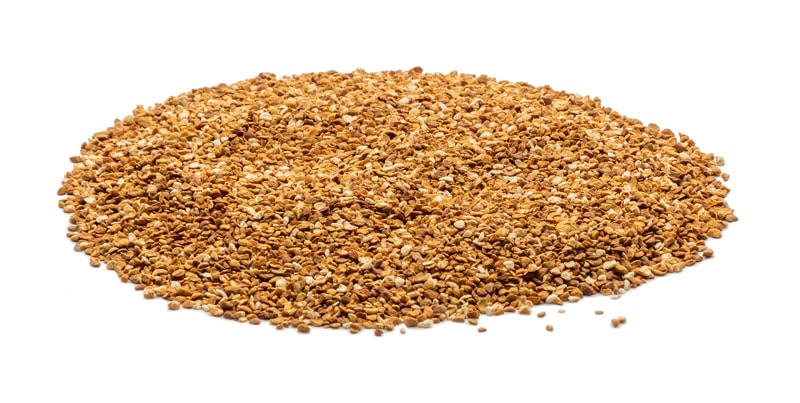 | |
HS-FLiquid Phase, Activated Alumina for Fluoride RemovalHydrosil’s HS-F is designed for fluoride removal for water treatment. This activated alumina is an adsorbent of metals as well as fluoride. Regeneration is typically used when media is spent. HS-F is widely used to remove fluoride in drinking water. There are several programs in the US studying the exposure of fluoride which suggest that high levels of fluoride in water is toxic to human brains. Hydrosil’s HS-F is NSF/ANSI standard 61 certified and therefore can be used for drinking water. | 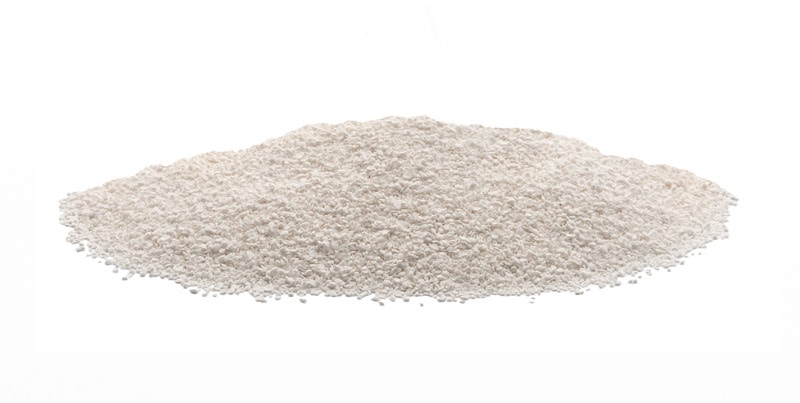 | |
HS-AAVapor Phase, Activated AluminaHydrosil’s HS-AA is designed for air and gas drying. The activated alumina uses a process called adsorption to dry air and gas. Activated alumina is manufactured from aluminium hydroxide which is dehydroxylated creating a porous material. The porous material works as a desiccant which when immersed in a liquid the material will not soften or deteriorate. When heated to approximately 350°F-600°F, HS-AA will release the water molecules that were adsorbed and the material can be reused. Common industries that use activated alumina are:
Activated alumina is often altered to increase affinity to select pollutants such as arsenic (HS-AS) and fluoride (HS-F). | 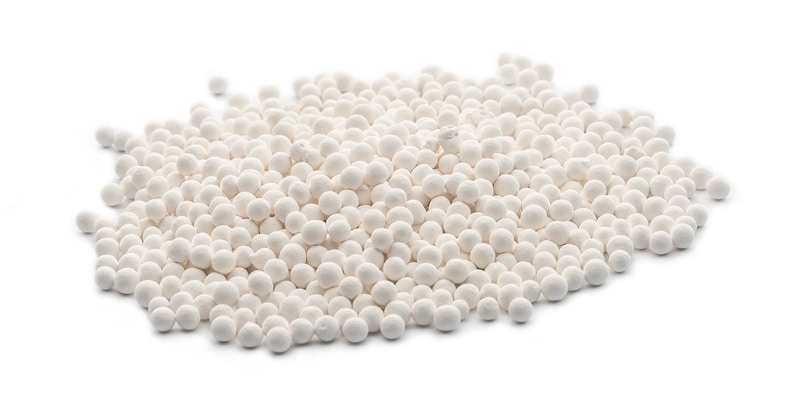 | |
HS-Cannablend-SelectVapor PhaseHydrosil’s HS-Cannablend-Select is a proprietary blend of selective media for odor and volatile organic compounds (VOC) removal. This media is successful at removing terpenoids and terpenes from vapor phase. Terpenoids and terpenes are large organic compounds produced by cannabis plants. Hydrosil’s HS-Cannablend-Select does not promote bacterial or mold growth. This proprietary blend is designed specifically for cannabis grow houses but can be used in indoor cultivation facilities. The HS-Cannablend-Select is commonly found in the final product handling rooms such as the curing/drying, cutting/deflowering, extraction, and packaging rooms. At the final product handling rooms the odors described as floral, fruity, pungent, or even skunky are strongest. For more information on Hydrosil’s air filtration equipment for HS-Cannablend-Select, take a look at our trays, modules, canisters page. The media itself is typically provided in one cubic foot boxes (33 lbs/box), drums, or supersacks.
| 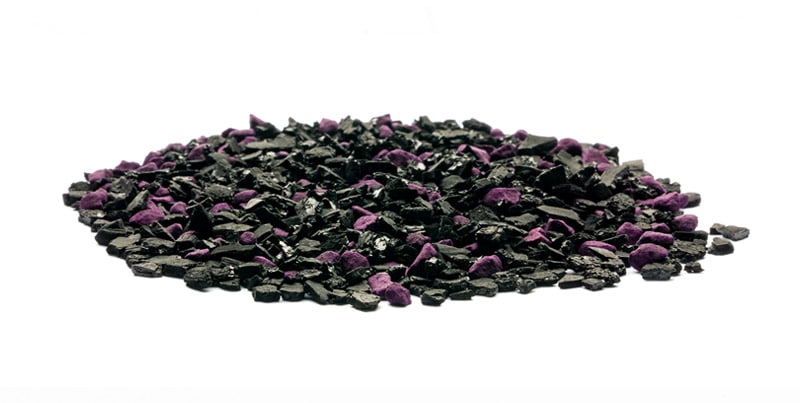 | |
HS-400Vapor Phase, Potassium Permanganate Activated AluminaHydrosil’s HS-400 is a spherical activated alumina that is impregnated with no less than 4.0% weight potassium permanganate (KMnO4). The media shall have 2.0 pounds of potassium permanganate per cubic foot. The HS-400 is found in exhaust systems, air dryers, and general HVAC applications. What’s the Difference Between HS-600 and HS-400?HS-400 is activated alumina impregnated media and HS-600 is zeolite impregnated media. Both medias are impregnated with potassium permanganate (KMnO4) which oxidizes acid gases and odors. The HS-600 is a harder material than the HS-400; Therefore, the HS-600 will result in insignificant dusting. Depending on the application, Hydrosil will suggest either the HS-600 or HS-400.
| 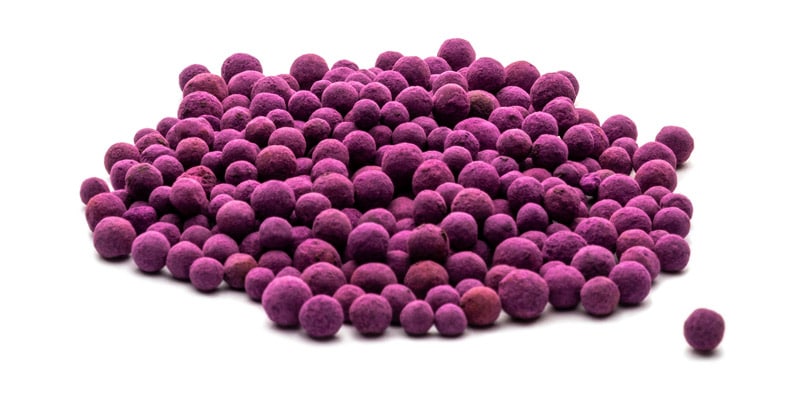 | |
HS-100-POVapor Phase, Ammonia RemovalHydrosil’s HS-100-PO is a molecular sieve of zeolite with impregnated with phosphoric acid. HS-100-PO is specially designed for removing ammonia from vapor phase systems. The theoretical removal for ammonia with HS-100-PO is 4.32 percent weight. The phosphoric acid reacts with the ammonia in an acid-base neutralization. Typically, the HS-100-PO is found in pulp and paper mills, industrial manufacturers, chemical processing plants, animal clinics/zoos, and semiconductor plants. | 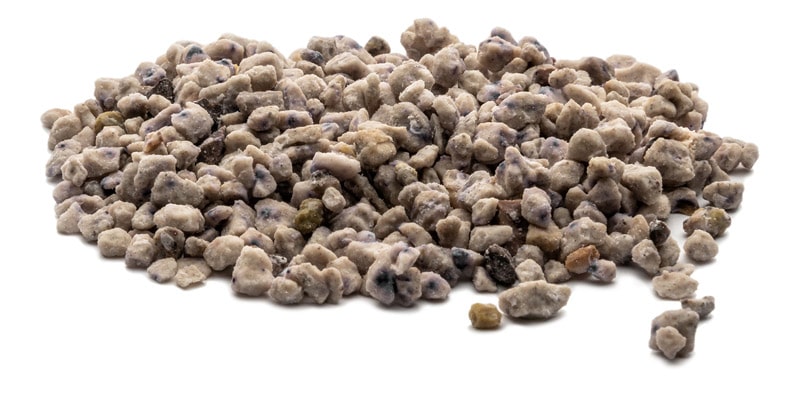 | |
HS-CLVapor Phase, Chlorine Gas TreatmentHydrosil’s HS-CL is a zeolite-based media that is impregnated with sodium thiosulfate. The HS-CL is specially designed for removing chlorine, bromine, or chlorine dioxide from vapor streams. The theoretical capacity of HS-CL is approximately 8.0 percent by weight. The HS-CL is typically used in pulp and paper facilities, chemical, fresh and waste water treatment plants. |  | |
XB-17-PVapor Phase, HS-600/Pelletized Activated CarbonHydrosil’s XB-17-P is a 50/50 blend by volume of HS-AC-P and HS-600. Various pollutant systems require both HS-600 and activated carbon for effective removal. Hydrosil’s HS-600 is modified zeolite that works to oxidize pollutants. For more information visit HS-600 product page. Hydrosil’s HS-AC-P is pelletized activated carbon. For more information visit HS-AC-P product page. The blend is commonly used to remove volatile organic compounds (VOC) from gas phase. The XB-17-P works to oxidize and adsorb pollutants. The media is frequently used in air dryers, scrubber tanks, exhaust systems, computer rooms, trays/modules and general HVAC applications. | 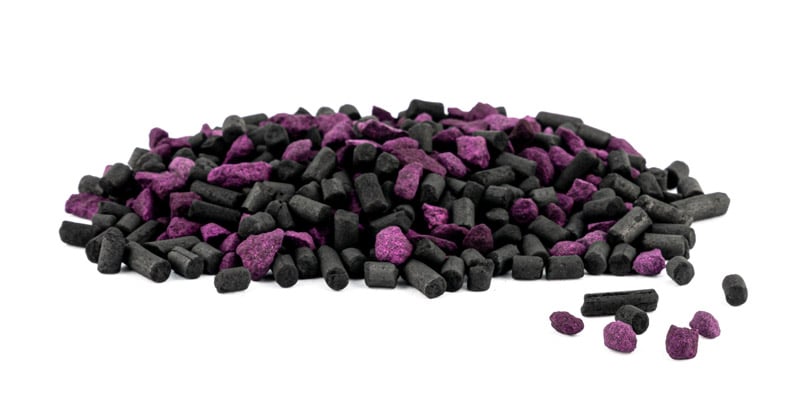 | |
XB-17Vapor Phase, HS-600/Activated CarbonVarious pollutant systems require both adsorption and reactive chemistry for effective removal of all pollutants. Therefore, Hydrosil created a product called XB-17. XB-17 is a 50/50 blend by volume of activated carbon (HS-AC) and HS-600. The blend is commonly used to remove volatile organic compounds (VOC) from gas phase. Hydrosil’s HS-AC is highly active granular activated carbon (GAC) manufactured via high temperature steam activation from selected grades of coconut shell. Coconut shell activated carbon is known for its high hardness, low dust, and low ash content. The HS-600 is a hard zeolite in the granular form. Its’ high impregnated level of potassium permanganate and insignificant dusting attributes make it an ideal media for gas phase filtration. The two products blended together casts a wide net to remove a handful of inorganic and organic compounds. Learn more about Activated Carbon The media is frequently used in air dryers, scrubber tanks, exhaust systems, airports computer rooms, trays/modules/air filtration housings, and general HVAC applications. To see if the XB-17 removes a specific pollutant please see our Air Pollutants page, or contact a representative today. | 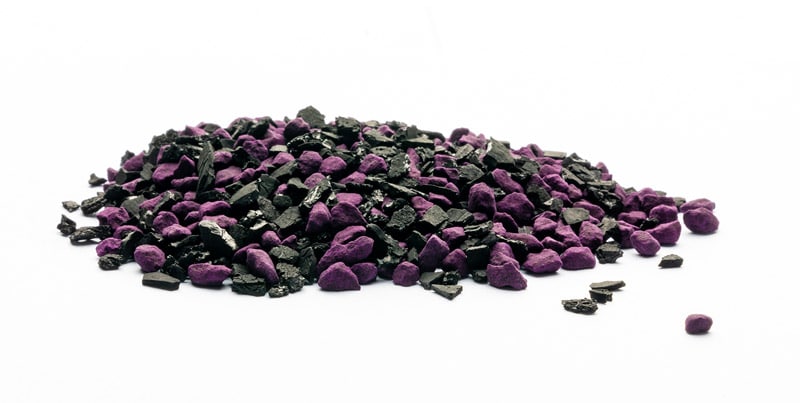 | |
HS-AC-HgVapor Phase, Coconut Shell Activated CarbonHydrosil’s HS-AC-Hg is highly active sulfurized granular activated carbon (GAC) manufactured via high temperature steam activation from selected grades of coconut shell. The HS-AC-Hg is used in vapor phase applications. The coconut shell activated carbon is impregnated with 10% sulfur content by weight which makes it ideal for removing mercury. Learn more about Activated Carbon Common industries that utilize the HS-AC-Hg include manufacturing facilities, semiconductor facilities, and refineries. The media can be loaded in tanks, exhaust systems, general HVAC systems, deep bed scrubbers, etc. | 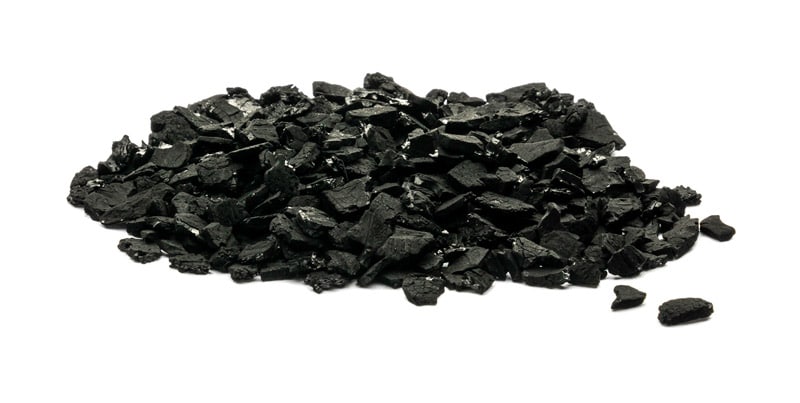 | |
HS-AC-P-HSVapor Phase, Pelletized CarbonHydrosil’s HS-AC-P-HS is highly active wood or coal based pelletized carbon. The carbon is manufactured for vapor phase applications. Hydrosil’s HS-AC-P-HS is a high-quality carbon with extraordinary surface area, fine pore structure, high density, and superior hardness. This type of carbon has an extremely high adsorption capacity for hydrogen sulfide of 0.3 g/cc. Depending on the application Hydrosil will help you select if a wood based pelletized carbon or a coal based pelletized carbon is correct for your application. Coal based pelletized carbon is more commonly used in odor control applications where hydrogen sulfide is a concern. Wood based pelletized carbon is used for more specific applications. The HS-AC-P-HS is used in a variety of odor control applications within the paper, food, biogas, process and wastewater treatment industries. The media can be loaded in tanks, exhaust systems, general HVAC systems, and deep bed scrubbers. HS-AC-P-HS is commonly used in sewage odor control vessels or scrubbers in lift stations to control odors such as hydrogen sulfide. | 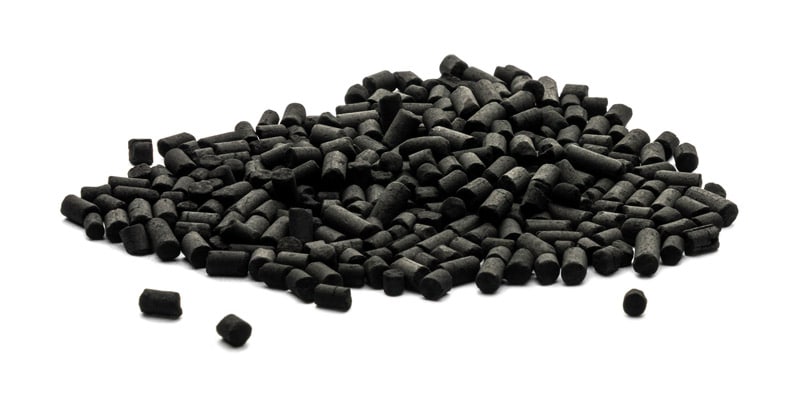 | |
HS-AC-P-KOHVapor Phase, Pelletized Coal CarbonHydrosil’s HS-AC-P-KOH is highly active coal based pelletized carbon impregnated with potassium hydroxide. The coal based activated carbon is manufactured for vapor phase applications. The substrate is impregnated with potassium hydroxide to target acidic gases. Hydrosil’s HS-AC-P-KOH has a carbon tetrachloride activity of no less than 60%. This carbon has a hydrogen sulfide removal capacity of 0.10 g/cc. Learn more about Activated Carbon. The HS-AC-P-KOH is commonly used in chemical processing, air stripper off-gas VOC removal, tank or sump air vents, general HVAC units, API separator vents, etc. | 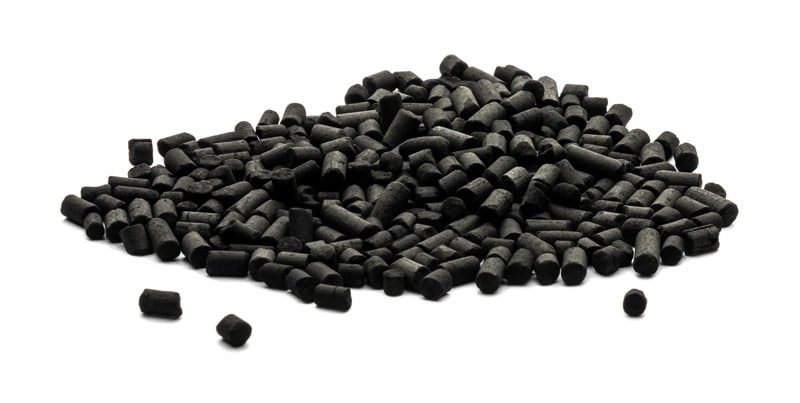 | |
HS-AC-P-POVapor Phase, Impregnated Coal Pellet Activated CarbonHydrosil’s HS-AC-P-PO is coal based activated carbon in pelletized or extruded form. The amount of phosphoric impregnation shall be no less than 7% by weight on the media. Hydrosil’s HS-AC-P-PO is designed for vapor phase applications. The HS-AC-P-PO is high quality carbon with extraordinary surface area, fine pore structure, high density, and superior hardness. The HS-AC-P-PO is used in a variety of odor control applications within the paper, food, biogas, process and wastewater treatment industries. |  | |
HS-AC-PVapor Phase, Coal Pellet Activated CarbonHydrosil’s HS-AC-P is coal based activated carbon in pelletized. Hydrosil’s HS-AC-P is designed for vapor phase applications. The HS-AC-P is high quality carbon designed to provide a low-pressure drop due to the cylindrical shaped pellets. The HS-AC-P is commonly used in chemical processing, paint spray booths, air stripper off-gas VOC removal, tank or sump air vents, respirators, API separator vents, etc. To see if the HS-AC-P removes a specific pollutant please see our Air Pollutants page, or contact a representative today. |  | |
HS-275Liquid Phase, Modified OrganoclayHydrosil’s HS-275 is an impregnated granular zeolite that is specifically designed to remove lower molecular weight hydrocarbons. The product is similar to HS-200; However works on removing lower molecular weight organics. Hydrosil’s HS-275 is used in salt water disposal sites, wastewater treatment, reverse osmosis systems, refineries, and manufacturing facilities. What is Organoclay?Organoclay, is a sorbent media which is designed to remove organic components. The media is a naturally occurring mineral (commonly zeolite or bentonite clay) which is chemically alternated to create a unique surface on the mineral. The modified surface is designed to create a strong affinity with organic compounds, meaning the media is organophilic. The surface of the media forms a surfactant bilayer which attracts ionic species. Ionic species are components that in solution are grouped as either anionic (anions) or cationic (cations). Anions have a negative charge and cations have a positive charge.
| 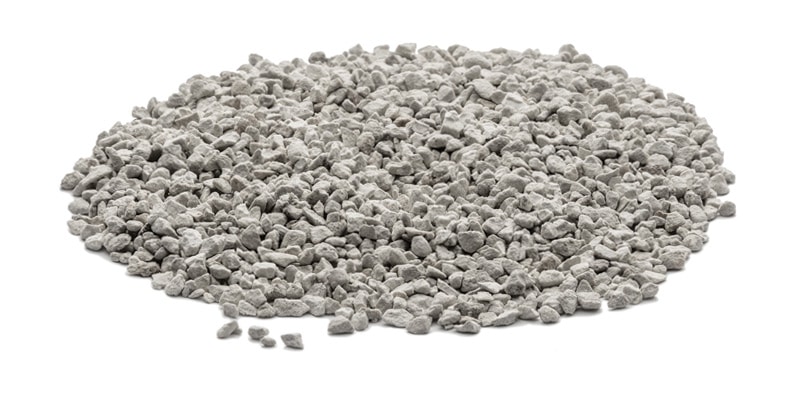 | |
HS-ACRLiquid Phase, Coconut Shell Reactivated CarbonWhat is HS-ACRHydrosil’s HS-ACR is a reactivated granular activated carbon (GAC) manufactured via high temperature steam activation from selected grades of coconut shell. Hydrosil’s HS-ACR is designed for liquid phase applications. The HS-ACR is high quality carbon with extraordinary surface area, fine pore structure, high density, and superior hardness. Hydrosil’s HS-ACR for treating liquid phase uses macro and micro pore adsorption to remove contaminants. Where is HS-ACR UsedHS-ACR is commonly used in oil and gas refineries, and industrial pollution control. Industrial projects that use HS-ACR include groundwater treatment, stormwater run-off treatment, and removal of dissolved organics. What is Reactivated CarbonReactivated carbon is a cost-effective alternative to virgin activated carbon. After the activated carbon is spent, the adsorbed organic compounds are destroyed via thermal treatment allowing the activated carbon to be used again. To reactivate carbon, the activated carbon is heated to high temperatures near 900°C which allows the organics that were adsorbed to be released from the pore structure. Once the organics are removed from the activated carbon pore structure the carbon is ready to be used again. The regeneration of activated carbon does result in a small loss of the activated carbons’ adsorption capacity. What is Activated CarbonActivated carbon commonly referred to as activated charcoal is a highly porous material used to remove pollutants from contaminated liquid and gas streams. Activated carbon is derived from a variety of raw materials such as coconut, wood, coal (bituminous, anthracite, sub-bituminous, and lignite), peat, and bamboo. Each raw material has unique properties which effect the resulting pore structure, carbon content, and ash content, which are important characteristics when removing a contaminant of concern. The material is used in remediation, medical, and industrial applications where adsorption is required. Activated carbon has strong physical adsorption properties known as London Dispersion Forces which is a Van der Waals Force. The attraction between the activated carbon and the pollutant are highly dependent on the vapor pressure of the adsorbing molecules. Activated carbon is often altered or impregnated by chemicals to enhance the surface area of the carbon. When the carbon is chemically altered the bonds are much stronger than London Dispersion Forces. Chemicals often impregnated on activated carbon include potassium hydroxide, phosphoric acid, or sulfur. With the addition of chemicals the activated carbon will have an affinity for select compounds such acidic or basic pollutants.
| 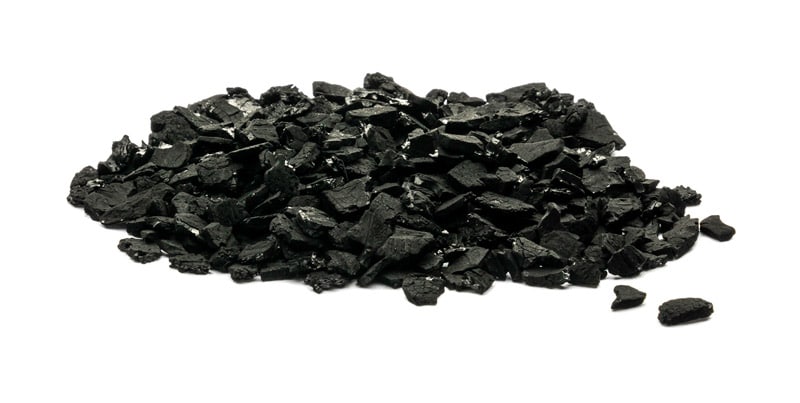 | |
HS-600Vapor Phase, Potassium PermanganateHydrosil’s HS-600 uses reactive chemistry to oxidize various pollutants. The HS-600 is zeolite impregnated with 6% potassium permanganate (KMnO4). Its’ high impregnated level of KMnO4 and insignificant dusting attributes make it an ideal media for gas phase filtration. The HS-600 is designed for removing acid gases, aldehydes, amines, and various hazardous air pollutants. The media is typically used in the following industries:
The media is loaded in tanks, exhaust systems, soil vapor extraction (SVE) systems, air filtration trays and modules. To see if the HS-600 removes a specific pollutant please see our Air Pollutants page, or contact a representative today. What’s the Difference Between HS-600 and HS-400?HS-600 is zeolite impregnated media and HS-400 is activated alumina impregnated media. Both medias are impregnated with potassium permanganate (KMnO4) which oxidizes acid gases and odors. The HS-600 is a harder material than the HS-400; Therefore, the HS-600 will result in insignificant dusting. Depending on the application, Hydrosil will suggest either the HS-600 or HS-400. What is Potassium Permanganate?Potassium permanganate (chemical formula KMnO4) similar to sodium permanganate is a crystalline purple solid that dissolves in water. Potassium permanganate uses include: medical use, water treatment, industrial use, analytical use, fruit preservation, and manufactured goods such as fire starters. Through oxidation-reduction (redox) reactions, KMnO4 is used in vapor control to remove harmful gases such as DCE, TCE, and styrene. Hydrosil often works with industry users that are targeting vinyl chloride (VC) monomer. | 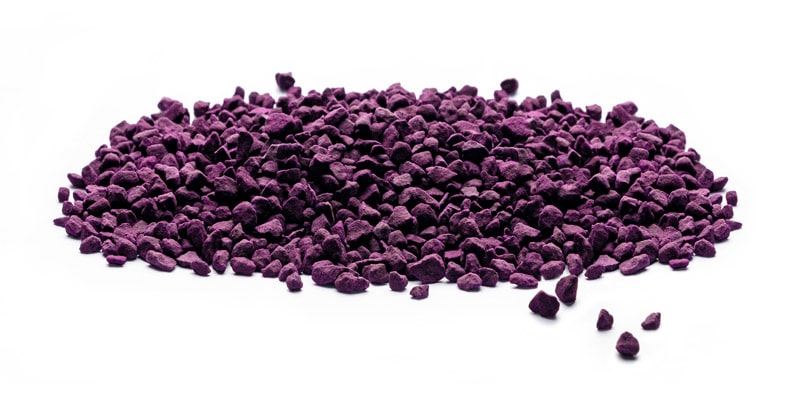 | |
HS-100Water Treatment, Ammonia TreatmentHydrosil’s HS-100 is a granular natural zeolite. The HS-100 has a high capacity for removing ammonia/ammonium from liquid phase. Zeolite filtration has also shown better performance than other medias such as sand and sand/anthracite media for particle filtration. The HS-100 is found in aquariums, residential drinking water filtration, wastewater treatment, stormwater treatment, mining trailing ponds, and agriculture industry. The HS-100 product is NSF 61 Certified for drinking water applications. What is Zeolite?There are roughly 40 types of natural occurring zeolites in the world. Natural zeolites are formed from sedimentary rocks or volcanoes which are essentially hydrated aluminosilicate minerals. There are 150 plus types of synthetic zeolites which are artificially made for specific purposes. Synthetic zeolites are manufactured to have uniform structure. Zeolites are hard solids which have high melting points. The material is unreactive and made with naturally occurring minerals. Zeolites are used in a variety of ways including water softeners, pet litter, catalysts, concrete production, and remediation. Understanding Ammonia/AmmoniumAmmonia in water exists as ammonia (NH3) and ammonium (NH4+). Depending on the pH and the chemistry of the water, the equilibrium and the presence of ammonia and ammonium will vary in your water. With a neutral pH and typical environments, most ammonia occurs as NH4+. As temperatures increase and the pH in the water changes the amount of NH4+ will decrease and the concentration of NH3 will increase. Typically when testing is completely on a contaminated water source, the total presence of free ammonia (both NH3 and NH4+) are accounted for. | 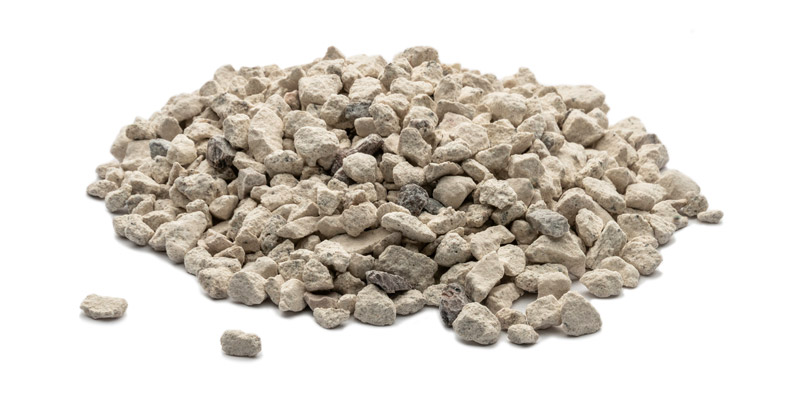 | |
HS-250-ACLiquid Phase, 50/50 Organoclay & Activated CarbonHydrosil’s HS-250-AC is a 50/50 blend by volume of organoclay, HS-200, and coconut shell activated carbon, HS-AC. The HS-AC is high quality carbon for liquid phase with extraordinary surface area, fine pore structure, high density, and superior hardness. Hydrosil’s HS-200 offers high removal capacity for select pollutants including fats, oils, greases and heavy metals while the HS-AC adsorbs a variety of aromatic and aliphatic compounds. The two products blended together casts a wide net to remove a handful of inorganic and organic compounds. This HS-250-AC is effective at removing oil, heavy metals, and similar organics from water. The HS-250-AC is used in wastewater treatment, food processing plants, gold purification, and manufacturing facilities. |  | |
HS-300Liquid Phase, Modified OrganoclayThe HS-300 is used to remove anionic compounds. Anionic compounds also known as anions are negatively charged ions. The surface of the HS-300 forms a surfactant bilayer which attracts ionic species. The media is targets compounds such as phosphates, cyanides, nitrates, and sulfates. Hydrosil’s HS-300 is found in sewage treatment, healthcare industry, and wastewater treatment.
| 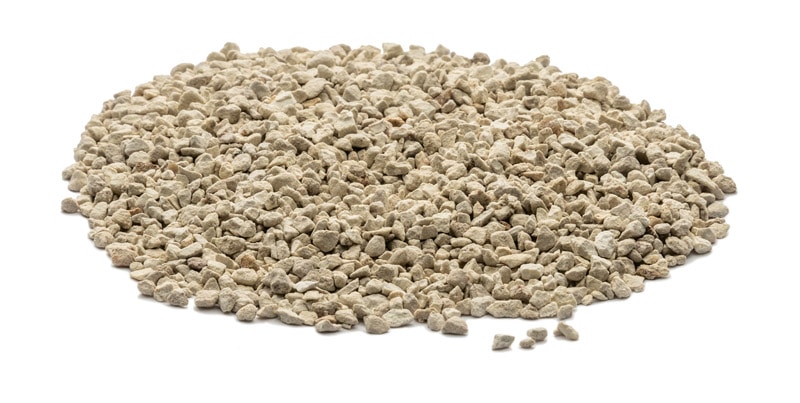 | |
HS-MTLiquid Phase, Modified Earth BlendHydrosil’s HS-MT for liquid phase filtration is a 50/50 blend by volume of HS-200 and modified earth with a density of 49-51 pounds per cubic foot. HS-MT is extremely effective at removing dissolved metals. Common metals found in water include nickel, cadmium, zinc, chromium, and thallium. Heavy metals are naturally occurring in the environment. Some heavy metals are essential in human bodies when in low concentrations such as copper and zinc. However high concentrations of heavy metals can have toxic effects on humans. Heavy metals in high concentrations can be found in soil, groundwater, and surface water due to mining and industrial pollution. The HS-MT is commonly used in wastewater treatment facilities and industrial water treatment. | 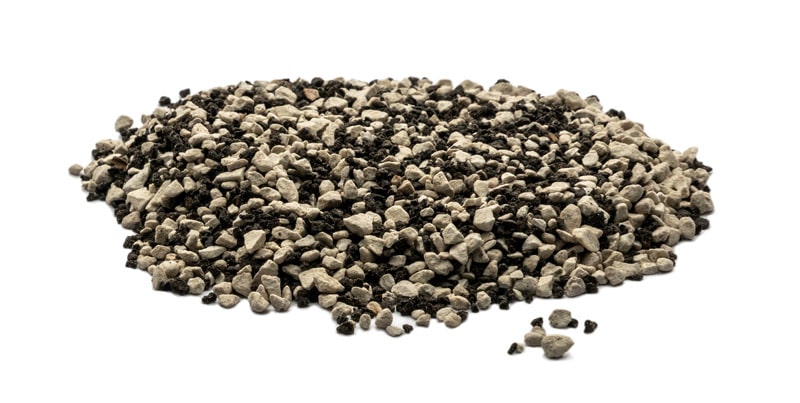 | |
HS-270Liquid Phase, 30/70 Organoclay & Anthracite CoalHydrosil’s HS-270 is a 30/70 blend by volume of organoclay, HS-200, and 6 x 30 mesh anthracite coal. This media is effective at removing oil, heavy metals, and similar organics from water. The HS-200 is designed to remove fats, oils, greases and various hydrocarbons. The anthracite is of the highest quality of coal with extraordinary hardness and works well with high service flow rates. The HS-270 is found in a variety of industries including wastewater treatment, and industrial manufacturing. | 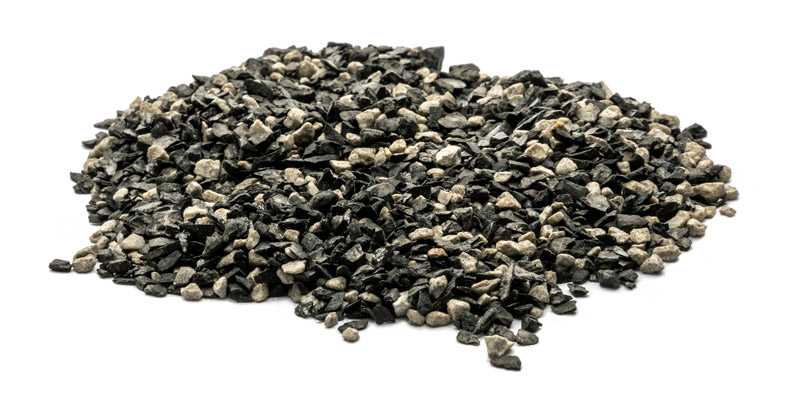 | |
HS-200Liquid Phase, Pure OrganoclayHydrosil’s HS-200 is designed to remove oil, heavy metals, and similar organics from water. The HS-200 is manufactured using a safe and naturally occurring element—zeolite. The material is non-hazardous and non-toxic. The HS-200 series can remove 70% plus of its own weight in hydrocarbons; Therefore, its’ life inside a still bed is much longer than that of other filtration media such as granular activated carbon. The HS-200 series:
Industries that use the HS-200 vary from environmental service companies to wastewater treatment facilities. The HS-200 is commonly used in oil water separators, frac tanks, pump and treat systems, condensate systems, stormwater run-offs, excavation and de-watering projects. What is Organoclay?Organoclay, also known as HS-200, is a sorbent media which is designed to remove organic components. The media is a naturally occurring mineral (commonly zeolite or bentonite clay) which is chemically alternated to create a unique surface on the mineral. Additives such as cationic surfactants are added to the mineral to modify the surface. By modifying the surface, we create a strong affinity with organic compounds, meaning the media is organophilic. The surface of the media forms a surfactant bilayer which attracts ionic species. Ionic species are components that in solution are grouped as either anionic (anions) or cationic (cations). Anions have a negative charge and cations have a positive charge. The HS-200 has a high cation exchange capacity (CEC). The most common cations include ammonia, sodium, calcium, potassium, and magnesium, many of which are desirable in numerous biological and industrial processes. Related Applications, Articles, and Case Studies
|  | |
HS-AC WaterActivated CarbonWhat is HS-ACHydrosil’s HS-AC is a granular activated carbon (GAC) manufactured via high temperature steam activation from selected grades of coconut shell. Hydrosil’s HS-AC is designed for liquid phase applications. The HS-AC is high quality carbon with extraordinary surface area, fine pore structure, high density, and superior hardness. Hydrosil’s HS-AC for treating liquid phase uses macro and micro pore adsorption to remove contaminants. HS-AC is NSF/ANSI/CAN 61 certified for potable water use. Where is HS-AC UsedHS-AC is commonly used in oil and gas refineries, municipal drinking water, and industrial pollution control. Industrial projects that use HS-AC include groundwater treatment, stormwater run-off treatment, reverse osmosis systems, and removal of dissolved organics. What is Activated CarbonActivated carbon commonly referred to as activated charcoal is a highly porous material used to remove pollutants from contaminated liquid and gas streams. Activated carbon is derived from a variety of raw materials such as coconut, wood, coal (bituminous, anthracite, sub-bituminous, and lignite), peat, and bamboo. Each raw material has unique properties which effect the resulting pore structure, carbon content, and ash content, which are important characteristics when removing a contaminant of concern. The material is used in remediation, medical, and industrial applications where adsorption is required. Activated carbon has strong physical adsorption properties known as London Dispersion Forces which is a Van der Waals Force. The attraction between the activated carbon and the pollutant are highly dependent on the vapor pressure of the adsorbing molecules. Activated carbon is often altered or impregnated by chemicals to enhance the surface area of the carbon. When the carbon is chemically altered the bonds are much stronger than London Dispersion Forces. Chemicals often impregnated on activated carbon include potassium hydroxide, phosphoric acid, or sulfur. With the addition of chemicals the activated carbon will have an affinity for select compounds such acidic or basic pollutants. |  | |
HS-25050/50 Organoclay & Anthracite CoalHydrosil’s HS-250 is a 50/50 blend by volume of pure organoclay, HS-200, and 6 x 30 tyler mesh anthracite coal. This media is effective at removing oil, heavy metals, and similar organics from water. The HS-200 is designed to remove fats, oils, greases and various hydrocarbons. For more information on the organoclay, visit the HS-200 product page. The anthracite is of the highest quality of coal with extraordinary hardness and works well with high service flow rates. Anthracite coal is commonly used in combination with other filtration medias. The HS-250 is typically the next step utilized when experiencing excessive back washing, changes in water quality, or changes in flow (plugging) occur. The HS-250 is found in a variety of industries including wastewater treatment, industrial manufacturing, and food and beverage. The Hydrosil blend is typically loaded in drums or tanks for easy pump and treat.
| 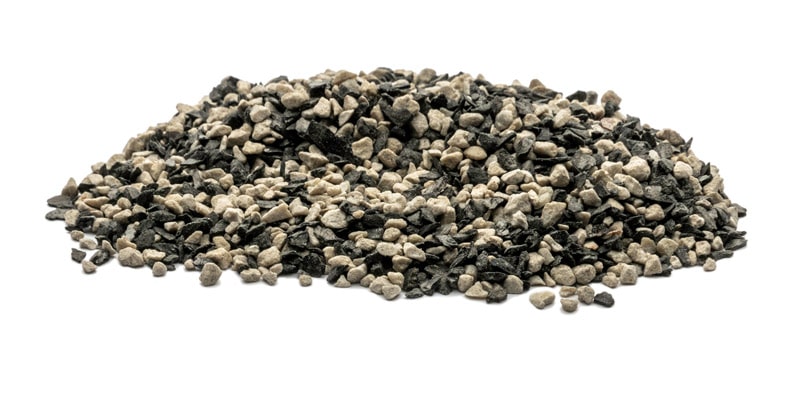 |